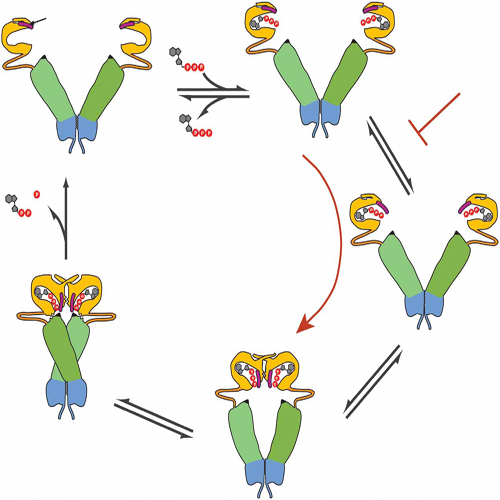Dissection of the ATP-induced conformational cycle of the molecular chaperone Hsp90
22-Feb-2009
Nature Structual & Molecular Biology, 2009, 16, 287 - 93 published on 22.02.2009
www.nature.com, online article
www.nature.com, online article
The molecular chaperone heat-shock protein 90 (Hsp90) couples ATP hydrolysis to conformational changes driving a reaction cycle that is required for substrate activation. Recent structural analysis provided snapshots of the open and closed states of Hsp90, which mark the starting and end points of these changes. Using fluorescence resonance energy transfer (FRET), we dissected the cycle kinetically and identified the intermediates on the pathway. The conformational transitions are orders of magnitude slower than the ATP-hydrolysis step and thus are the limiting events during the reaction cycle. Furthermore, these structural changes can be tightly regulated by cochaperones, being completely inhibited by Sti1 or accelerated by Aha1. In fact, even in the absence of nucleotide, Aha1 induces Hsp90 rearrangements that speed up the conformational cycle. This comprehensive reconstitution of the Hsp90 cycle defines a controlled progression through distinct intermediates that can be modulated by conformation-sensitive cochaperones.











